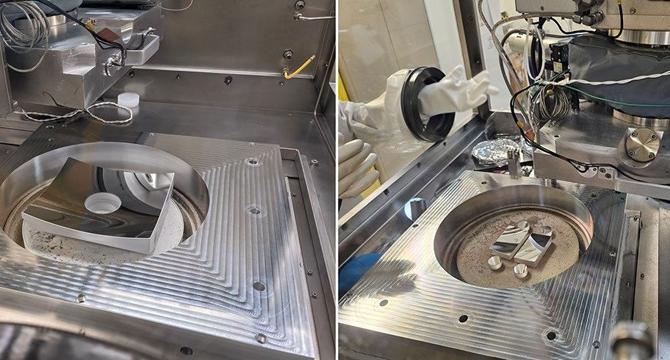Nasa
4w
428

Image Credit: Nasa
Atomic Layer Processing Coating Techniques Enable Missions to See Further into the Ultraviolet
- New approaches in thin film coatings using atomic layer deposition (ALD) and atomic layer etching (ALE) are enhancing ultraviolet (UV) light measurements in astrophysics.
- ALD and ALE techniques, common in the semiconductor industry, are now being used for optical coatings, particularly for ultraviolet wavelengths.
- Researchers at NASA JPL are developing fluoride-based ALD and ALE processes for ultraviolet instruments to improve reflectance and reduce absorption losses.
- Metal fluoride coatings protect aluminum mirrors used in UV instruments by preventing oxidation while maintaining high reflectance.
- SPRITE and Aspera astrophysics missions utilize ALD-deposited magnesium fluoride on lithium fluoride coatings to enhance UV performance and stability.
- ALD processes are crucial for creating multilayer aluminum and metal fluoride bandpass filters for UV imaging sensors, improving UV efficiency.
- The JPL team is focusing on applying ALD processes to larger-format sensors for the NASA UVEX mission, enhancing UV observations.
- Future work involves implementing bandpass filters on Si CMOS sensors for the NASA UVEX mission, targeting launch in the early 2030s.
- The synergy of ALD and PVD techniques in coating development is advancing ultraviolet observations in astrophysics missions.
- The use of ALD and ALE processes is revolutionizing optical coatings in UV instruments, offering precise control over layer thickness and material properties.
Read Full Article
25 Likes
For uninterrupted reading, download the app